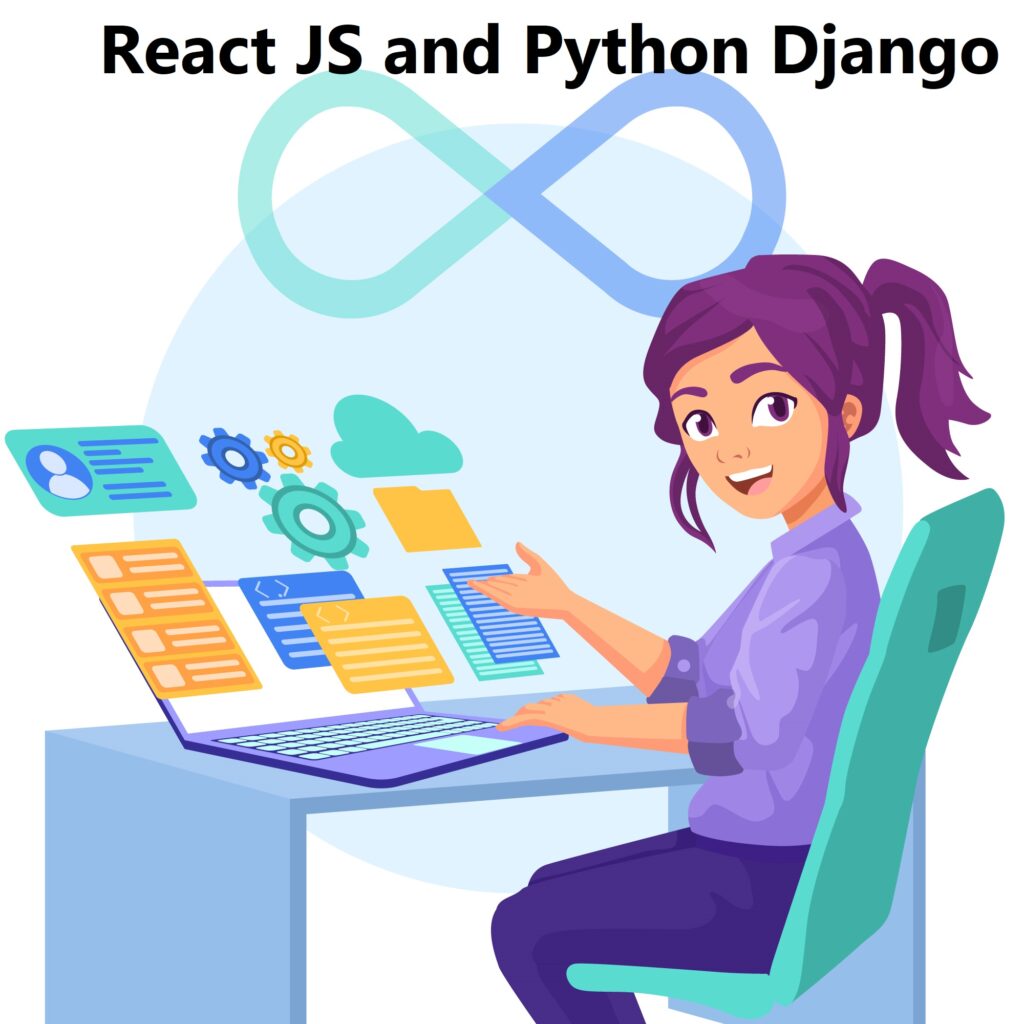1- Introduction to React JS and Python Django:
Welcome to the world of full-stack web development, Integrate React and Django for unbeatable full-stack web solutions. Dive into the world of web development excellence today. where React JS and Python Django shine as top choices.

Table of Contents
2- Understanding React JS: (React and Django)
a- Installing React JS:
Start by installing React on your development environment.
b- Creating a React Component:
Learn how to build your first React component.
c- State Management in React:
Master the art of managing state in React applications.
3- Exploring Python Django: (React and Django)
a- Installing Python Django:
Get Django up and running on your system.
b- Creating a Django Project:
Begin your Django journey by setting up a project.
c- Django Models and Views:
Dive into the heart of Django with models and views.
4- React JS vs. Python Django:
a- Front-end vs. Back-end Development:
Understand the distinct roles of React and Django in web development.
b- Pros and Cons:
Delve into the strengths and weaknesses of each framework.
5- Building a Full Stack Web Application:
a- Integrating React with Django:
Learn how to seamlessly merge React and Django for a full-stack solution.
b- Data Communication:
Ensure smooth data exchange between the front-end and back-end.
c- Deployment Options:
Explore various methods to deploy your full-stack web app.
More about: Django (web framework)
Learn more: React (software)
Our recent post: JavaScript Vs Python

6- Conclusion: (React and Django)
- Summarize the key takeaways of using React JS and Python Django in full-stack development.
This content brief provides a comprehensive outline for a blog post covering React JS and Python Django full-stack development. It addresses the structure, keywords, and key concepts to be covered in the blog post, along with suggested title tags and meta descriptions for SEO optimization.
FAQs:
Q: What is the main purpose of React JS in web development?
A: React JS is primarily used for building interactive and user-friendly user interfaces (UIs) in web applications.
Q: How does Python Django simplify back-end development?
A: Python Django streamlines back-end development by providing a high-level, all-in-one framework that includes features like ORM, authentication, and security, reducing the need for repetitive coding.
Q: What are the key differences between React JS and Python Django?
A: React JS is a JavaScript library for front-end development, focusing on UI components, while Python Django is a back-end web framework that emphasizes server-side logic and database management.
Q: How can you integrate React with Django to create a full-stack web application? A: You can integrate React with Django by setting up an API in Django to communicate with the front-end React components, enabling seamless data exchange between the two.
Q: What are the advantages of using a full-stack approach in web development?
A: Full-stack development allows for end-to-end control of a web application, streamlining the development process, improving communication between front-end and back-end, and enhancing overall project efficiency.
Q: Which deployment options are commonly used for full-stack web applications built with React and Django?
A: Full-stack web applications can be deployed on various platforms, including cloud hosting services like AWS and Heroku, or on dedicated servers, depending on the project’s specific requirements and scalability needs.


Pingback: Boost your Django project's